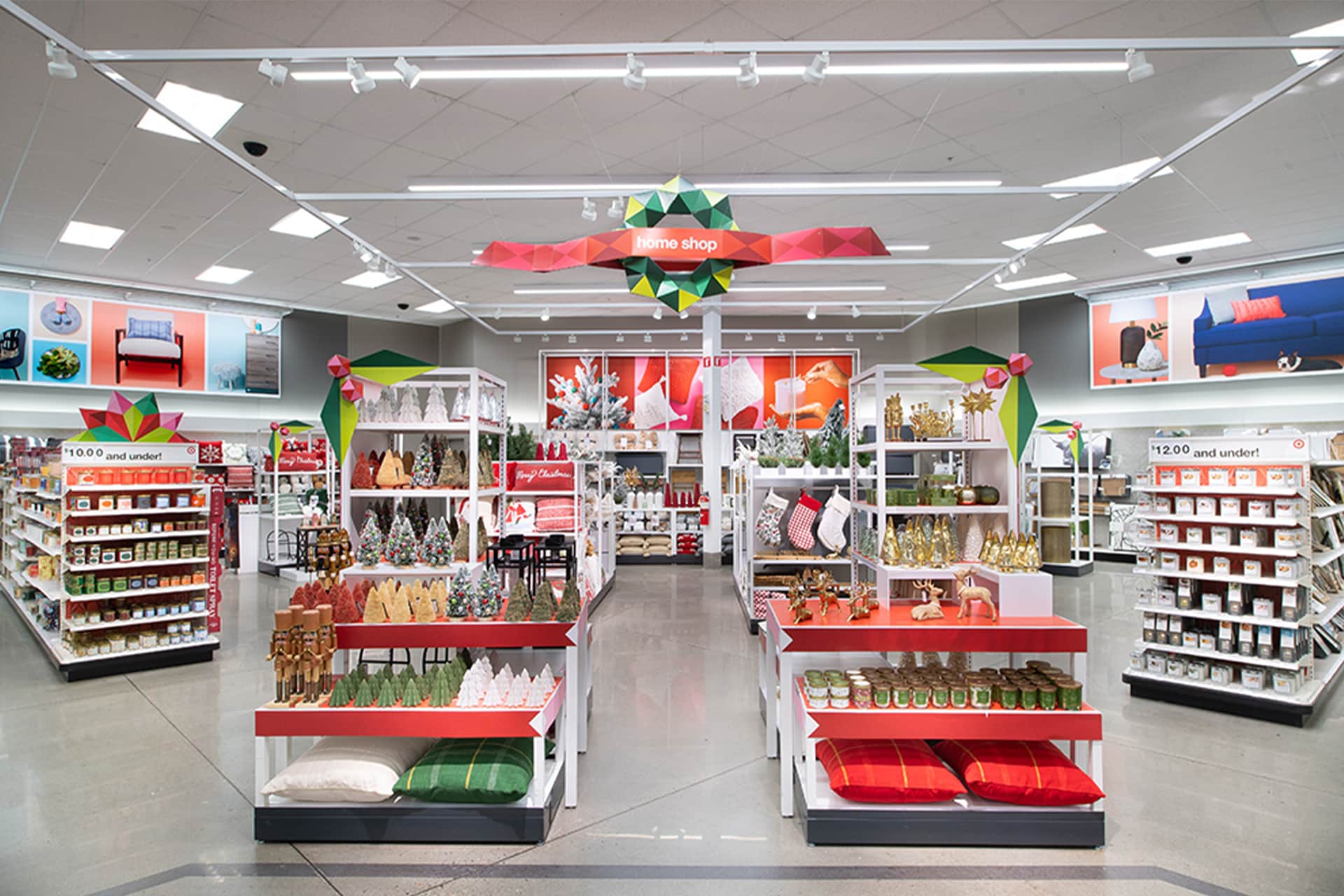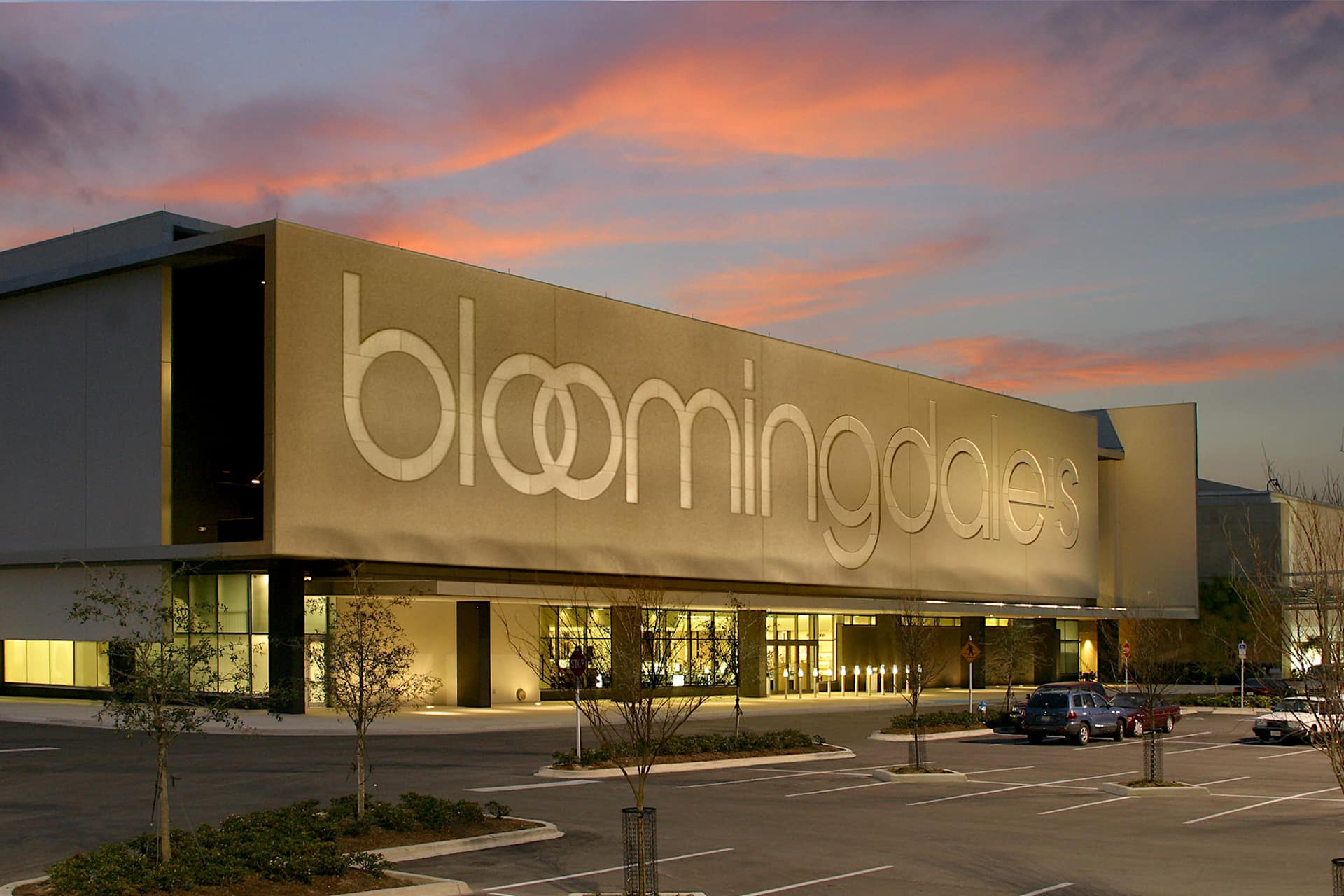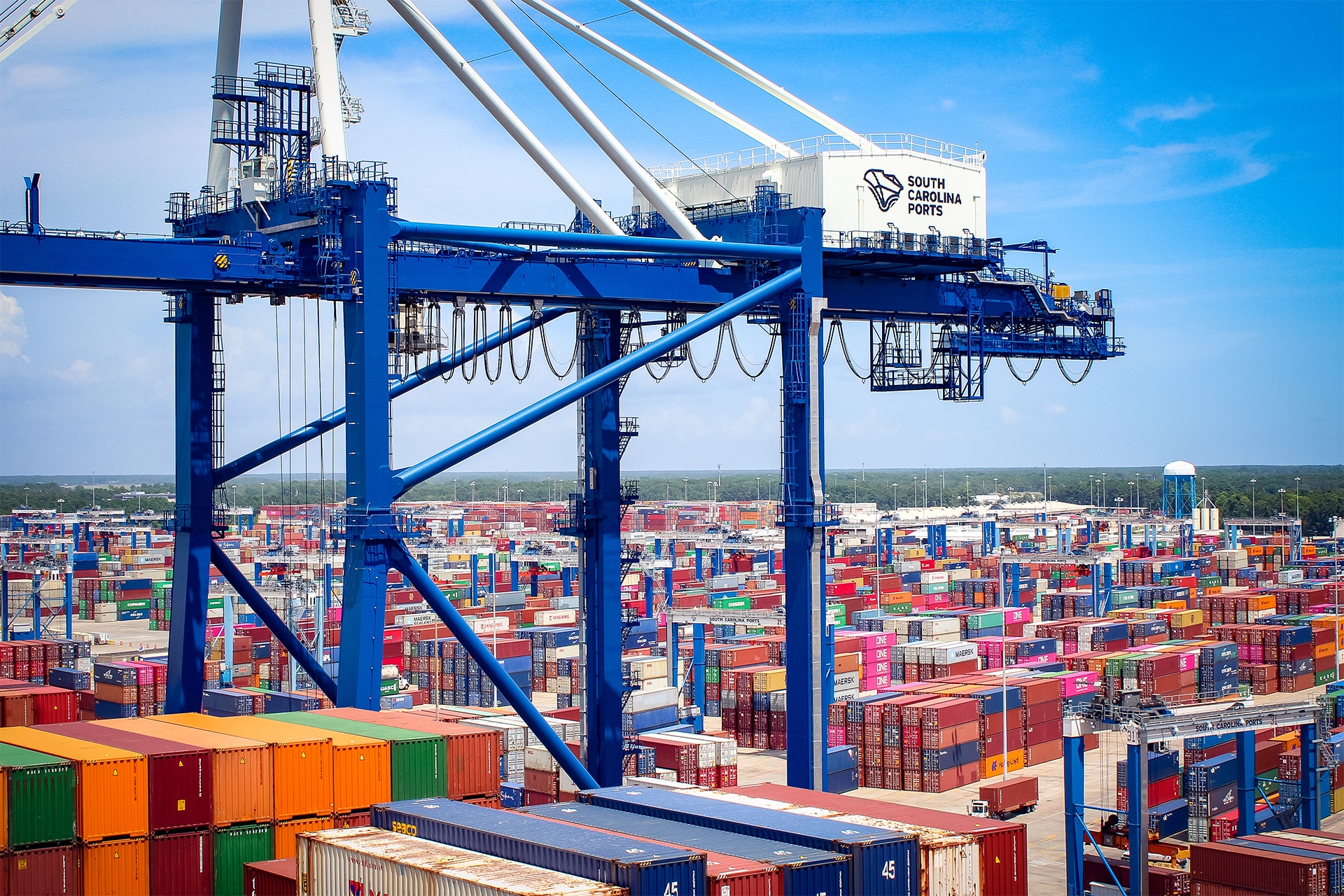Many major retailers that found themselves in an inventory bloat recently have been doing what they can to trim down by the end of January when most retailers move from one fiscal year to the next, but doing so may be difficult due to the same lingering challenges that have imposed themselves the past couple of years, with those in the supply chain conspicuous among them.
Stepping into 2023, retailers and their suppliers have to think about new procedures, processes and forecasting tools as the movement toward something closer to the normal course of business encounters changes initiated by the COVID-19 pandemic that may be troublesome but can create opportunity.
A good holiday season would be a boost to retailers who are trying to move excess inventory they accumulated in reaction to shortages that arose last holiday season only to see consumer purchasing priorities change. Retailers, with Target being an example, have worked to move excess inventory for months, dealing with clearing older overstocked goods and bringing in holiday-oriented merchandise. As they were doing so, pressure from inflation and interest rate hikes complicated the outlook for 2022’s end and 2023’s beginning. New goods hit as demand dropped under the pressure of inflation and interest rates designed to take the steam out of rising prices.
In its recent third-quarter conference call, Target chairman and CEO Brian Cornell asserted that when Target ran an early holiday promotion in October, the company saw a shift in consumer behavior that squeezed company results.
“Even within the month of October, results in the back half of the month were much softer than in the first half,” he said. “In the mix, our sales tilted much more heavily toward promotions. This rapid change in trend is consistent with what we’re seeing in syndicated data on broader industry trends and the feedback we’re hearing from our guests. More specifically, consumers are feeling increased levels of stress, driven by persistently high inflation, rapidly rising interest rates and an elevated sense of uncertainty about their economic prospects.”
He added that as high inflation rates erode their purchasing power, “many consumers this year have relied on borrowing or dipping into their savings to manage their weekly budgets. But for many consumers, those options are starting to run out. As a result, our guests are exhibiting increasing price sensitivity, becoming more focused on and responsive to promotions and more hesitant to purchase at full price. On the profit line, we saw an expected improvement in the third quarter as we will be on the bulk of those costs from our second quarter inventory actions. However, Q3 profitability came in well below our expectations.”

Brian Cornell, Chairman & CEO, Target
In the mix, our sales tilted much more heavily toward promotions. This rapid change in trend is consistent with what we’re seeing in syndicated data on broader industry trends and the feedback we’re hearing from our guests. More specifically, consumers are feeling increased levels of stress, driven by persistently high inflation, rapidly rising interest rates and an elevated sense of uncertainty about their economic prospects.
– Brian Cornell, Chairman & CEO, Target
The prime factor, Cornell said, was unexpected gross margin rate pressure from a higher-than-anticipated mix of promotional sales*, as shoppers shied away from full-price purchases.
Cornell was wary when asked in the conference call about discussing 2023 prospects, “We are laser-focused on the holiday season and making sure we end 2022 in a position where we continue to hold and grow share and meet the needs of our guests,” he said. “For the very early stages of looking at 2023, we’ll be back after the first of the year with more details about our overall plans, including cap-ex spending and our outlook for the overall consumer environment. But, obviously, we’re going to spend a lot of time right now focused on executing our plan, getting through the holiday season, and then assessing the consumer and the overall retail landscape as we look to 2023.”

Target Home Shop
As summer ended, retailers looked forward to a solid holiday season that could help settle inventory and supply chain issues or at least help push things in the right direction. Still, a question that hung over the selling season: Would demand be sufficient to move excess product without deep discounting? If consumers determined to hold onto their cash until discounts exceeded 30%, profits would tumble. Not only that, but deep discounting would hurt the third-party operators on retailer marketplaces, which retailers have added to expand and deepen product assortment online. Retailer decisions to begin holiday-style promotions suggested that a highly promotional and unprofitable holiday season might be at hand. Early on, observers noted that discounts offered in October promotional events were relatively shallow and, in many cases, only just brought prices down below the impact of inflation, which put them in line with last year’s full prices.
Adobe charted the progression of discounting online from early October through to Thanksgiving weekend and demonstrated that it took a graduated deeper course. So, promotional events in early October and subsequently through to Thanksgiving were moderate in their discounting and, so, created an opportunity to drive sales from what effectively became the beginning of the holiday season through November with some positive margin attached.
Looking ahead, though, Adobe stated that it expected discounts would reach record heights in the holiday season, upwards of 32% on average, as retailers dealt with inventory issues. Adobe anticipates discounts for computers to reach 32%, in one example, up from 10% in 2021. Discounts will run across categories to varying degrees with appliances at 18% versus 4% in the 2021 holidays, and furniture and bedding at 11% versus 2% in the year-ago season.
In charting online discounting, Adobe demonstrated that average discounts in electronics, toys and apparel, categories shopped heavily by holiday gift givers, were less than 2% in early October despite the retail sales launched by Target, Amazon, Walmart and others in and around that period, but for Cyber Monday, on average, electronics discounts were 23.8%, toy discounts were 33.8% and apparel discounts were 16.5%. In contrast, furniture discounting that started out at a little less than 2% in early October was only up to 6% by Cyber Monday. Discounts for appliances that averaged a bit more than 3% in early October hit 14.5% on Cyber Monday.
In early October, sporting goods were zero on the discount scale while those for televisions were 0.5%, those for computers were 0.5% and those for televisions were 1.2% on average. By Cyber Monday, discounts were 7.1%, for sporting goods, 14.4% for computers and 12.9% for computers. So, discounting hadn’t reached the heights Adobe anticipated by Cyber Monday, but a lot of the holiday season remained after Thanksgiving weekend in a somewhat odd Christmas season when Super Saturday fell on December 17, leaving a full week of shopping, including another Saturday, for consumers for procrastinating gift purchasers.

So, while Black Friday and Cyber Monday sales beat those in 2021, $9.12 billion versus $8.92 and $11.3 billion versus $10.7 billion, respectively, a lot of consumers still had shopping to do. Indeed, in a National Retail Federation and Prosper Insights and Analytics study that reported Thanksgiving weekend retail traffic up 17 million visitors from 2021 to 196.7 million, shoppers reported that they still had half their gift buying yet to do.
An important consideration for retailers trying to get their inventory and supply chain operations back on track was whether consumers would shop the traditional Thanksgiving weekend promotional occasions after almost two months of constant, although modest, sales events. If not, at least some retailers might be forced to take losses in moving products via monster bargains as December arrived. Before the holiday season began, major retailers had taken bottom line hits to move excess inventory and create room for holiday-oriented products, including Walmart and especially Target in its second quarter.
The evidence that Black Friday would be fairly busy despite the number of prior major sales events tracking back to October, began to come in during the event itself.
Deborah Weinswig, CEO and Founder of Coresight Research, a global firm specializing in retail and technology, told HomePage News that she was in “the real world” for Black Friday. So, rather than virtual landscapes, she took in Black Friday from the Providence Place Mall in Providence, RI, where fewer people were lining up early as retailers have de-emphasized door-buster savings on the morning of the selling event.
However, things “really picked up and got very busy as the day went on,” she said. Electronics, toys and shoes were the hot items at Providence Place.
She added that, as the day wore on, lots of shoppers were marching the mall “carrying around several bags, or just stopping to rest with multiple bags at their feet.”
Of course, digital shopping remains critical and Weinswig said Coresight analysis suggested that Walmart was a big Black Friday winner, and she pointed out that the ability to return an item to a physical store makes a big difference with consumers today.

Deborah Weinswig, CEO & Founder, Coresight Research
In a larger Coresight Black Friday store review, which took in various retail destinations, staffers tended to see stronger responses to department stores including Nordstrom and Macy’s and more upscale chain stores such as Williams-Sonoma.
Some indications, and some recent financial results, suggest that upscale and luxury stores have enjoyed relatively strong results because their affluent consumers have been less troubled by inflation. In that case, inventories of high-end and aspiration products may wind up moving with lighter discounts as compared with more middle-market goods as the holiday selling season closes.
Coresight is among those firms that recommend against deep discounting to clear inventories. Besides the immediate effect of lowering margins, deep discounting can be troublesome in other ways. The firm noted that the rate of returns on Saturday and Sunday of Thanksgiving weekend almost doubled year over year, likely because consumers who purchased holiday items early in the season and at lesser discounts did their own price adjustments when they saw better deals.
Coresight pegged the average Cyber Monday discount rate across categories in the United States at 26%, 12 points higher than in the 2021 occasion.
Katherine Black, a partner in the consumer practice at global strategy and management consulting firm Kearney, made her own observations on Black Friday, and characterized foot traffic as “brisk,” although it was not immediately certain that the visits had translated into sales.
The NPD Group concurred with that observation. Indeed, the market researcher said that Black Friday week marked the sixth consecutive week of in-store sales revenue declines for U.S. discretionary general merchandise. For the week ending November 26, including Thanksgiving, Black Friday and Small Business Saturday, sales revenue was 5% lower than the same week in 2021, while unit sales were down 8%.
Black also observed less traffic in visiting stores around Raleigh, NC, during early morning hours. In the affluent neighborhoods they researched, Black and company visited Target, Best Buy, Macy’s and Bass Pro Shop all had good shopper traffic but no early morning lines or completely full parking lots.
Black said she expects luxury retail to do well through the holidays in serving the affluent but also believes off-pricers will finish 2022 strong serving lower-income consumers and middle-class shoppers who are looking to save some money in a time of economic uncertainty. Off-pricers recently have done well in their reported sales and earnings, but Weinswig’s staff found off-pricers lightly shopped on Black Friday. In the Coresight report at least one off-pricer employee told the firm’s representatives that Walmart’s discounting in the two weeks before had been a factor in sluggish Black Friday weekend sales.
With the jury out on the success of the holiday season, the sufficiency of sales to clear inventory remains uncertain and the likelihood that retailers can clear stock without taking big losses is even tougher to forecast.
The view on inventory and supply chain, at least from the North American perspective, remains unsure.
As a result, said Brian Ehrig, a Kearney partner, noted that those retailers who were seriously overstocked are likely to have planned on keeping goods moving past the calendar year-end and into gift card season to get the next fiscal year off on the best footing possible.
“Promotional activity is likely to continue into January,” he said. “The most common fiscal year-end for retailers is end of January, so many companies will look to clear inventory in the month of January and look to put this fiscal year behind them and focus on better performance in 2023.”
The long promotional period that has been the prominent feature of this year’s retail holiday season has meant that any plans to clear inventory are well underway. But it will wait until the final days of the holiday season and gift card season in January to demonstrate just how successful overstocked retailers were at getting enough out of inventory. If sales prove slower than retailers hope, the time period will demonstrate how much below 30% retailers feel they need to go as they look to reach an acceptable inventory and supply chain position by the start of the next fiscal year.

Brian Ehrig, Partner, Kearney
Promotional activity is likely to continue into January. The most common fiscal year-end for retailers is end of January, so many companies will look to clear inventory in the month of January and look to put this fiscal year behind them and focus on better performance in 2023.
– Brian Ehrig, Partner, Kearney Management Consulting Firm
“The peak promotional period for holiday so far was actually the week before Thanksgiving, followed closely by the week of Halloween,” Ehrig noted.
How sales are set and just what that will mean for bottom lines in the fourth quarter of this fiscal year will be another factor, and the degree of discounting done will provide evidence of just how well fiscal 2023 will begin. The picture remains complex. Of course, some retailers who didn’t or wouldn’t overstock after last holiday season’s shortages have a chance to play playing catch-up with those who did, including many mass-market majors. The overstocked are weighing the price of aging inventory against the bottom line and comparing it with sales they expect in the post-Christmas rush.
Still, gift card sales aren’t likely to fall evenly across retail. According to market research firm Numerator, 60% of shoppers plan to purchase gift cards this holiday season, but many consumers have specific retailers in mind when they pick them up. Gift cards from Amazon, at 35%, proved most popular in the Numerator research, followed by those from Target, at 20%, restaurants, at 19%, Walmart, at 18%, and in credit card style, at 18%.
Ehrig pointed out that at least some retailers who operate above the mass market in terms of luxury merchandise, including department stores that have done well in 2022, have been aggressive in their discounting. Of course, given margins, the willingness to discount narrowly or sell through quickly with the risk of disappointing some customers, as well as the ability to readily manipulate prices in digital operation, the fourth quarter will be challenging for retail management no matter the relative market positioning. The latter fourth quarter also will demonstrate how well retailers in general can cope with the difficult circumstances they face. Even for retailers determined to get rid of inventory that’s been held over from the pre-holiday season, the true depth of discounting across overall operations is difficult to predict, at least as the last holiday push is prepared. Evidence suggests retailers will continue to discount deeply while being as selective as possible.
“It’s nuanced,” Ehrig said, as he pointed out that premium department stores had begun discounting particularly deeply.
“Saks 5th Avenue is averaging a 50% discount. Macy’s and Nordstrom are around 40%. Kohl’s is closer to 35%,” he said.
Affluent shoppers have more financial flexibility, and their discretionary income isn’t impinged as much by inflation when compared with spending cash available to middle- and lower-income consumers. The effect can be seen through the year at Macy’s, where the namesake banner financials came in below those in 2021 for the second and third quarters, yet its luxury nameplates Bloomingdale’s and Bluemercury made gains. The relatively good year many luxury retailers are experiencing could allow them to be both assertive and selective as the year ends, providing deep but limited discounts on merchandise they want to move as a draw to the store while they maintain better margins on the rest of their assortments.

In evaluating early holiday season shopping including Black Friday weekend, Erin Schmidt, senior analyst at Coresight Research, said the company’s annual store tours in select cities across the U.S. encountered discounts ranging from 15% to 60% but without as significant a number of promotions as in past years.
“Children’s stores had the biggest discounts, with Carters offering 50-60% off throughout the entire store and The Children’s Place offering 60% off in their store in Queens, New York. Eddie Bauer offered 50% off and Ralph Lauren offered 50% off in the apparel category. We also saw concentrated promotions from teen-focused retailers including American Eagle Outfitter banners AEO, Aerie, and, offline offering 30%-40% off the entire store. Urban Outfitters offered buy-one-get-one-half-off, and H&M discount was 30% off the entire store.” Department stores provided bargains on selected items and categories, rather than big discounts across the board, Schmidt said, with, Macy’s offering 40% off selected styles. Mass market retailers including Target and Walmart were promotionally specific to gifting categories including toys and electronics.
Apparel has been among the categories that has been identified as overstocked, which may be driving sales and promotional tactics, as those retailers with less or no significant inventory issues have to compete with those trying to get back in balance.
Some specialty retailers drummed up some deep discounts on Black Friday including Eddie Bauer, offering 50% off, and Ralph Lauren, offering 50% off apparel, and Vineyard Vines, offering 60% off everything in the store, barring some accessories.
“We also saw children’s stores offering the biggest discounts, with Carters offering 50%-60% off of the entire store and The Children’s Place offering 60% off the store in Queens, N.Y.,” Schmidt says.
Even if early season discounting was relatively shallow to give retailers a chance to make some margin before competition drives prices down further, that shouldn’t be considered evidence that retailers won’t launch bigger bargains over the next few weeks.
Schmidt pointed out, “Most retailers have reported on third-quarter earnings calls that traffic was down in October and into the first part of November and started to pick up a little in mid-November. Management across the industry reported that they believe that consumers are waiting to make their holiday purchases closer to Christmas and that they will be looking for the best bargains compared to last year when consumers shopped early when consumers were worried about not getting merchandise in time for Christmas. The retailers are comparing this holiday shopping season to 2019. Additionally, there is an extra shopping Saturday this Christmas which will also drive more last-minute shopping.”
Retailers have expected the 2022 holiday season to be very promotional and have said they plan to remain competitive. As such, retailers were ready to ratchet up discounts in the approach to Christmas.

Erin Schmidt, Senior Analyst, Coresight Research
Many retailers have been discounting ‘pandemic’ categories that have been softening in demand including active, home and ‘cozy-comfort wear’ as consumers quickly changed preferences earlier this year to dressier apparel and occasion wear, and causing much of the inventory glut and promotions that we have seen across the industry in 2022. Some retailers reported that they are continuing to discount some of this inventory into the fourth quarter with the goal of entering the new fiscal year with a clean inventory position, and most retailers have reported that they are entering the holiday season with new inventory.
– Erin Schmidt, Senior Analyst, Coresight Research
“For example, Macy’s said that they will look at pricing on a week-to-week approach and Kohl’s management said it plans to provide consumers with the best value this holiday season and in order to be competitive,” Schmidt said.
Inevitably, emphasis will fall on product categories that did well in the pandemic but need cleaning up now, Schmidt said.
“Many retailers have been discounting ‘pandemic’ categories that have been softening in demand including active, home and ‘cozy-comfort wear’ as consumers quickly changed preferences earlier this year to dressier apparel and occasion wear, and causing much of the inventory glut and promotions that we have seen across the industry in 2022. Some retailers reported that they are continuing to discount some of this inventory into the fourth quarter with the goal of entering the new fiscal year with a clean inventory position, and most retailers have reported that they are entering the holiday season with new inventory. However, we still expect that even with new inventory, there will still be a lot of promotions this holiday and that it will be absolutely essential for retailers to price match as consumers will be researching for the best prices,” Schmidt said.
Supply Unsnarling
Although inventories remain an issue for overstocked operations, some retailers would take cheer from the slowdown in ordering from big retailers with inventory issues they need to reset. By early December, retailers that had trouble restocking earlier in the year now could look forward to a much less congested supply chain.
The monthly Global Port Tracker report produced by Hackett Associates and the National Retail Federation said major U.S. ports moved 2 million TEU, which translates into 20-foot containers or the equivalent, in October, the last month with reported final numbers, down 1.3% from September and down 9.3% from October 2021.
Although ports hadn’t reported numbers for the month by the time the report was released, Global Port Tracker projected November to see 1.85 million TEU moving through major ports, down 12.3% year over year, the lowest volume figure since 1.87 million TEU in February 2021. The December forecast was for 1.94 million TEU, down 7.2% from the year-before period. The forecast for January 2023 was 1.97 million TEU, down 8.8% from January 2022 while that for February was 1.67 million TEU, the lowest since 1.61 million TEU in June 2020 and a 20.9% drop from the year-before month when cargo back-ups kept congested ports busy. The outlook for March was 1.91 million TEU, down 18.6% year-over-year with April coming in at 1.95 million TEU, down 13.8% from the 2021 month.
As he reported the October figures, Hackett Associates founder Ben Hackett said supply chain shouldn’t weigh as heavily in 2023.
“Key indicators point the way to a robust economy,” Hackett said, referring to holiday season increases in retail sales, employment and gross domestic product despite high inflation and interest rate hikes by the U.S. Federal Reserve. “Yet the volume of imported container cargo at the ports we cover has declined, and the next six months will see further declines to a level not seen for some time.”
Inna Kuznetsova, CEO of ToolsGroup, a global supply chain planning and optimization firm, said discounting and inventory management efforts won’t eliminate all supply chain challenges. Adjustments retailers made during the middle of the year, strong holiday season, and added fortune in the form of a railroad strike avoided, still won’t be the end of supply challenges companies still are sorting out.
“Over the last few months, we saw two trends in the marketplace: first, high amounts of wrong inventory due to the prior delays in shipping and fast changes in consumer demand; second, growth in sales often accompanied by reductions in profitability,” Kuznetsova said. “Inflationary pressures forced many consumers to switch to less expensive goods within the same category or shift a considerable part of discretionary spending to basics or less costly options. As a result, we saw high discounts on large home appliances, furniture and electronics, the high-growing categories during COVID that lost both demand and wider affordability. In addition, a lot of retailers discounted previous models or peak-of-season fashions to clear space for new models and new seasons.”
Even if retailers can get inventories back to more typical levels in the holiday season, ongoing changes in demand and supply fragility may continue to knock inventory flow and reserves out of balance, she said.
Over the last few months, we saw two trends in the marketplace: first, high amounts of wrong inventory due to the prior delays in shipping and fast changes in consumer demand; second, growth in sales often accompanied by reductions in profitability. Inflationary pressures forced many consumers to switch to less expensive goods within the same category or shift a considerable part of discretionary spending to basics or less costly options. As a result, we saw high discounts on large home appliances, furniture and electronics, the high-growing categories during COVID that lost both demand and wider affordability.
– Inna Kuznetsova, CEO, Toolsgroup Global Supply Chain Planning and Optimization Firm
As China moves from lockdowns to less severe COVID-related regulations, the situation in the key export market remains volatile Schmidt. Indeed, reports out of China document a major increase in COVID infection. Even companies with production in the U.S. can be hit by delays in getting packaging materials from Asia, which in itself can create inventory problems, Kuznetsova.
Even positive developments can have a dark side to them, she warned, so retailers and their suppliers may need to approach 2023 with deliberate caution.
“As for the demand, it continues to be strong this season, yet growing credit card debt combined with growing interest rate levels and massive layoffs in several industries may tip the scale of demand after the holidays,” she says.
Kuznetsova asserted that, to deal with the supply chain as it’s evolving after two years of disruption, investing in more robust forecasting technology, including AI-based modeling, can help companies detect and respond to developments faster so they can mitigate risks and adjust plans quicker.
The efforts on putting inventories on a more normal basis in 2023 may pay off, but retailers may be forced to consider deeper discounts and other profit-squelching actions moving out of this year and into 2023. Kuznetsova considers that a problematic alternative. Whether or not a company is faced with hard choices in dealing with inventory and supply chain challenges, what has happened in retail over the past couple of years certainly warrants bolstering planning abilities, she said.
“Deep discounting is a very dangerous way to adjust inventory levels as it leads to high dips in profits,” Kuznetsova said. “Thus, we saw Levi’s reporting revenue growth of 6% while profits dipped double digits due to growing costs. A better way to optimize inventory is to improve the forecasting effectiveness based on probabilistic models, factoring in new and ongoing risks, while supplementing with more effective ways of fulfilling orders, for example, accounting for upcoming discounts, not just shipping costs, when deciding which store or warehouse to ship from.”
So, retailers that have struggled through the past few months of inventory troubles and shipping woes are in a position to look at new tools and practices through the lens of fresh experience and find ways to ready themselves for future trials.

Inna Kuznetsova, CEO, Toolsgroup
“Deep discounting is a very dangerous way to adjust inventory levels as it leads to high dips in profits. A better way to optimize inventory is to improve the forecasting effectiveness based on probabilistic models, factoring in new and ongoing risks, while supplementing with more effective ways of fulfilling orders, for example, accounting for upcoming discounts, not just shipping costs, when deciding which store or warehouse to ship from.
– Inna Kuznetsova, CEO, Toolsgroup Global Supply Chain Planning and Optimization Firm
In the nearer term, however, strong consumer spending through holiday’s end could brighten 2023 prospects, even if the “hangover,” as Elissa Robertson, CEO of Sears Hometown characterized it, from the COVID-19 pandemic remains. The characterization was made in a Chapter 11 bankruptcy petition that emerged from a dispute between Sears Hometown and its supply agent Transformco over inventory.
“The ability to clear excess inventory will depend on consumer demand staying strong for each of the main categories, which may not hold true amid layoffs and rising interest rates,” Kuznetsova said. “In addition, many categories showing excess inventory are the ones that were selling well above average during the pandemic, TVs, large home appliances and furniture. Simply put, there are only so many big-screen TVs a household can acquire over a period of two to three years. So those retailers who acted on the assumption of continued growth in such categories may have difficulty moving high excess inventory even with deep discounts.”
Whatever the holiday season holds as regards inventory issues and supply chain, other tribulations await.
“Unfortunately lead times remain very high compared to pre-pandemic times across many industries, from apparel and fashion to consumer goods. New cases of COVID in China, geopolitical events and high-interest rates continue to be a factor, so rather than talking about a typical sourcing cycle of four to five years, we see continuous adjustments to the new reality. As a part of this adjustment, we see more and more companies redesigning their supply chains from merely cost centers to drivers of revenue and efficiency through sensing and fast response to external signals.”
With adjustments being made, the factors influencing supply and demand still are difficult to assess precisely, making it difficult to predict just when the flow of goods becomes broadly acceptable. It may not be back to a state that approximates what occurred before the pandemic by the time January ends.

South Carolina Ports Authority Wando Welch Terminal
Factors that only recently began generating discussion, such as increased use of East Coast ports, a change that has raised concern with people involved in West Coast ports, are creating new practices and even opportunities that will keep what was considered normal before the pandemic from reemerging as a standard going forward.
“By the nature of retail, it is natural to assume that a lot of goods may end up with deep discounters or even in landfills to clear space for new models and new season collections,” Kuznetsova maintained. “The question shifts to whether New Year’s inventory planning is done smartly. AI-driven forecasting will help optimize it across raw materials, goods in transit, safety stock and promotional inventory, and help avoid the next cycle of inefficiency. The only thing we know for certain is that uncertainty continues and should be factored in a new way in the post-pandemic era.”
*On December 26, Target began a new promotion dubbed The Target Clearance Run including up to 50% off select clothing, shoes, toys, beauty and home décor. Other deals included up to 40% off select floor care including iRobot and Shark. While post-holiday sales are part of the retail landscape, the aggressive posture Target took immediately after the holiday and the select nature of the discounts suggest that the company still has inventory it needs to eliminate and continues working to do so in a select manner so as not to surrender too much in the way of profits.





